
There are three schools of dance in Uzbekistan : Khorezm, Fergana, and Bukhara. Each one has its peculiarities and specific features. [1]

There are three schools of dance in Uzbekistan : Khorezm, Fergana, and Bukhara. Each one has its peculiarities and specific features. [1]
Khorezm dance is known for its fiery nature. The most popular style of dance is "Lazgi", which has been included in the Representative List of the Intangible Cultural Heritage of Humanity by the Intergovernmental Committee for the Safeguarding of Intangible Cultural Heritage of UNESCO in 2019. [2] The music consists of an introduction and main body including folk melodies. First, slow and simple dance movements are made with the fingers, wrists, and shoulders, and then the whole body starts to move. The pace accelerates and becomes increasingly energetic. Men and women dance it very differently. [3]
In contrast to Khorezm, Fergana is fluent and lyrical, with smooth rounded movements of dancers' hands. [4] [5] [6]
Bukhara dance is complex and measured. Some local monuments of the early Middle Ages portray this original art and its place in the life and culture of the residents of Bukhara Region. [7] [8]
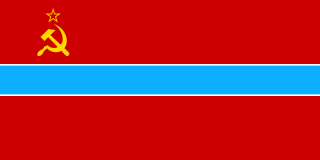
The Uzbek Soviet Socialist Republic, also known as Soviet Uzbekistan, the Uzbek SSR, UzSSR, or simply Uzbekistan and rarely Uzbekia, was a union republic of the Soviet Union. It was governed by the Uzbek branch of the Soviet Communist Party, the legal political party, from 1925 until 1990. From 1990 to 1991, it was a sovereign part of the Soviet Union with its own legislation.

Kochari is a folk dance originating in the Armenian Highlands. It is performed today by Armenians, while variants are performed by Assyrians, Azerbaijanis, Kurds, and Pontic Greeks. It is a form of circle dance.

Navoiy, also spelled Navoi, is a city and the capital of Navoiy Region in the southwestern part of Uzbekistan. Administratively, it is a district-level city, that includes the urban-type settlement Tinchlik. It is located at latitude 40° 5' 4N; longitude 65° 22' 45E, at an altitude of 382 meters. The city is named after Ali-Shir Nava'i. As of 2020, its population was 144,158 inhabitants.

This article discusses the administrative-territorial division of the Republic of Uzbekistan. The Article 68 of the constitution of Uzbekistan defines:
The Republic of Uzbekistan shall consist of regions, districts, cities, towns, settlements, kishlaks and auls (villages) in Uzbekistan and the Republic of Karakalpakstan.
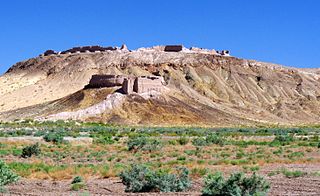
Khorezm Region is a viloyat (region) of Uzbekistan located in the northwest of the country in the lower reaches of the Amu Darya River. It borders with Turkmenistan, Karakalpakstan, and the Bukhara Region. It covers an area of 6,050 square kilometres (2,340 sq mi). The population is estimated at 1,959,300 (2023), with 67% living in rural areas. The capital is Urgench. Other major towns include Xonqa, Khiva, Shovot, and Pitnak.

Chhau, also spelled Chhou, is a semi classical Indian dance with martial and folk traditions. It is found in three styles named after the location where they are performed, i.e. the Purulia Chhau of West Bengal, the Seraikella Chhau of Jharkhand and the Mayurbhanj Chhau of Odisha.
An intangible cultural heritage (ICH) is a practice, representation, expression, knowledge, or skill considered by UNESCO to be part of a place's cultural heritage. Buildings, historic places, monuments, and artifacts are cultural property. Intangible heritage consists of nonphysical intellectual wealth, such as folklore, customs, beliefs, traditions, knowledge, and language. Intangible cultural heritage is considered by member states of UNESCO in relation to the tangible World Heritage focusing on intangible aspects of culture. In 2001, UNESCO made a survey among States and NGOs to try to agree on a definition, and the Convention for the Safeguarding of the Intangible Cultural Heritage was drafted in 2003 for its protection and promotion.
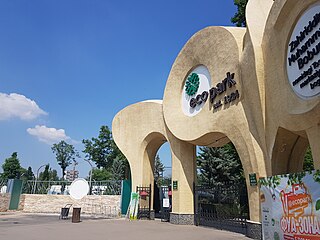
Tourist activities in Uzbekistan range from outdoor activities, such as rock-climbing, to exploration of its archeological and religious history. The Statistical Internet Survey conducted between May 7 and August 27, 2008, found that the majority of those surveyed (39%) visit Uzbekistan due interest in its architectural and historical sites. The next-largest group (24%) visited Uzbekistan to observe its culture, way of life, and customs.

Cheoyongmu is a representative Korean mask dance based on the legend of Cheoyong, a son of the Dragon King of the Eastern Sea. It is also the oldest surviving Korean court dance created during the Unified Silla period. Cheoyongmu has also been considered as a shamanistic dance because it was performed to drive off evil spirits at the end of the year.
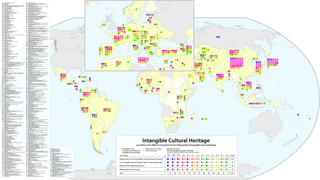
UNESCO established its Lists of Intangible Cultural Heritage with the aim of ensuring better protection of important intangible cultural heritages worldwide and the awareness of their significance. This list is published by the Intergovernmental Committee for the Safeguarding of Intangible Cultural Heritage, the members of which are elected by State Parties meeting in a General Assembly. Through a compendium of the different oral and intangible treasures of humankind worldwide, the programme aims to draw attention to the importance of safeguarding intangible heritage, which UNESCO has identified as an essential component and as a repository of cultural diversity and of creative expression.

The Goychay Pomegranate Festival is an annual cultural festival that is held in Goychay, Azerbaijan. The festival features Azerbaijani fruit-cuisine mainly the pomegranates from Goychay. At the festival, a cultural parade is held with dances and music.
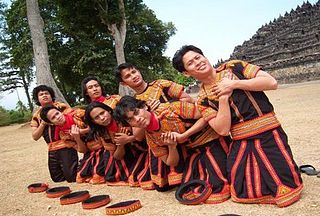
Saman is one of the most popular dances in Indonesia. Its origin is from the Gayo ethnic group from Gayo Lues, Aceh province, Indonesia, and is normally performed to celebrate important occasions. The dance is characterized by its fast-paced rhythm and common harmony between dancers. These two elements are key figures of Saman, and are among the reasons Saman are widely known and practiced in Indonesia, besides being relatively easy to learn.
Intangible cultural heritage (ICH) includes traditions and living expressions that are passed down from generation to generation within a particular community.
Chakkirako is a dance performed at a festival in Miura, Japan, to celebrate the New Year and bring good fortune, especially in fishing.
Lazgi is a folk music and dance of Khorezm. It has different styles for men and women.